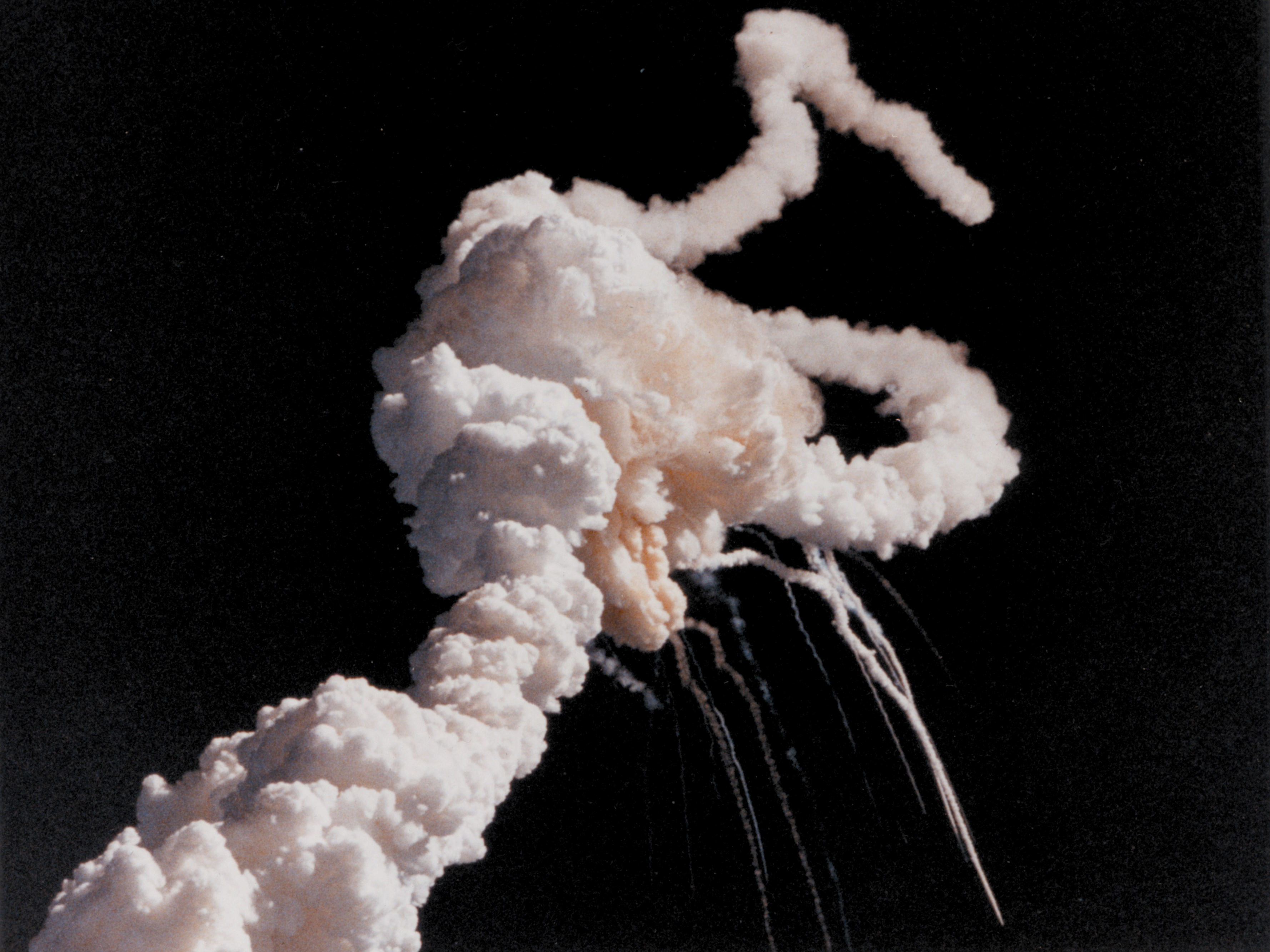- On this day 34 years ago, NASA’s space shuttle Challenger broke apart during launch, claiming the lives of its seven crew members, including one civilian teacher.
- The tragedy changed the course of NASA’s future.
- Challenger left an influential legacy of accomplishments in space.
- Visit Business Insider’s homepage for more stories.
On the morning of January 28, 1986, seven crew members were killed when the space shuttle Challenger broke apart a little over a minute after it launched.
Those killed included five NASA astronauts, one payload specialist, and a civilian schoolteacher.
This mission was Challenger’s 10th, but the shuttle suffered an engine failure because of a design flaw in its seal. A joint in one of the rocket boosters failed at liftoff and the external fuel tank collapsed, leading to the demise of the vehicle.
Challenger was the second shuttle to reach space, which it did first in April 1983. It also sent the first African-American astronaut into space, completed the first in-flight capture and repair of a satellite, and launched the first US woman in space.
The disaster marked a turning point for NASA. An investigation after the explosion found that many engineers and astronauts believed NASA was pushing its programs forward at breakneck speed, without sufficient funding or testing. NASA added more internal checks and processes after the event to prevent similar tragedies.
The space agency also stopped sending civilians on potentially dangerous space-shuttle missions.
These photos reveal the many missions of Challenger and its tragic end.
NASA unveiled Challenger to the public in 1982.

The new orbiter sat atop a 747 carrier aircraft.
Challenger was named after the British HMS Challenger ship, which led the Challenger Expedition: a groundbreaking marine research trip from 1872 to 1876.

Challenger's first mission, called STS-6, launched on April 6, 1983.

After that first flight, Challenger flew 85% of all space-shuttle missions during its lifetime.

Sally Ride became the first American woman in space aboard the Challenger in 1983.

Guy Bluford became the first African-American astronaut in space when he flew on Challenger's STS-8 mission in August 1983.

Astronaut Bruce McCandless became the first person to fly unconnected to a spacecraft during a Challenger mission called STS-41B.

The crew members who died when Challenger exploded in 1986 were part of the STS-51L mission.

From left to right in the photo above: teacher-in-space Christa McAuliffe, astronauts Gregory Jarvis and Judith Resnik, mission commander Dick Scobee, astronaut Ronald McNair, pilot Mike Smith, and astronaut Ellison Onizuka.
On January 28, 1986, the space shuttle Challenger exploded 73 seconds after it took off for its 10th mission.

The remains of Challenger were collected and memorialized in a retired Minuteman missile silo at Cape Canaveral Air Force Station in Florida in 1986.

On the 20th anniversary of the Challenger explosion, June Scobee Rodgers — the widow of Dick Scobee — placed this wreath was placed at the memorial.

NASA's space-shuttle program lasted from 1981 to 2011. No astronauts have flown in American spacecraft - or launched from US soil - since then.
That might change this year, however, since NASA has been working with SpaceX and Boeing to build new astronaut-ready spaceships. Bob Behnken and Doug Hurley are set to be the first to fly SpaceX's Crew Dragon spaceship later this year.
